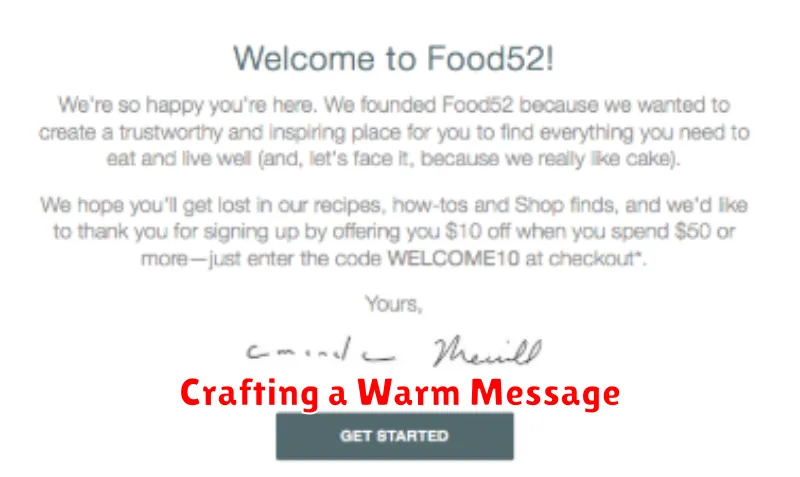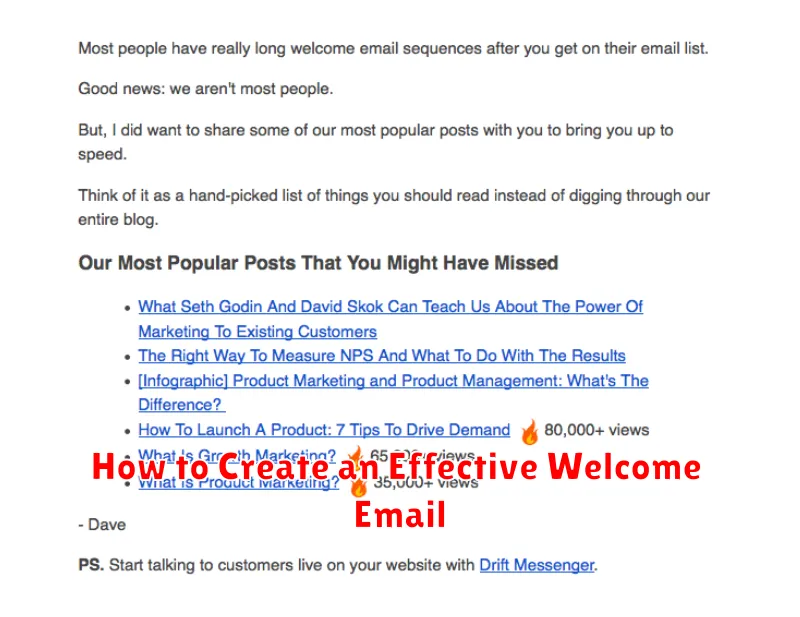A welcome email is often the first impression a business makes on a new subscriber or customer. Crafting an effective welcome email is crucial for establishing a positive relationship, encouraging engagement, and ultimately driving conversions. This article explores essential strategies and best practices for creating welcome emails that resonate with your audience and achieve your business goals. Learn how to optimize your welcome email series for maximum impact, from subject line to call to action.
Discover how to leverage the power of welcome email templates to streamline your onboarding process and create a consistent brand experience. We’ll delve into the key elements of a successful welcome email, including personalization techniques, compelling content strategies, and effective calls to action. Whether you’re looking to improve your current welcome emails or create them from scratch, this guide will provide you with the knowledge and tools you need to make a lasting impression on your new subscribers and customers.
Importance of First Impressions
A welcome email is often the very first interaction a new subscriber or customer has with your brand after signup. This makes it a critical moment for establishing a positive first impression. Like any introduction, a well-crafted welcome email sets the tone for the entire relationship.
A strong first impression can foster trust and encourage engagement. It signals professionalism, clarifies expectations, and demonstrates the value your brand offers. Conversely, a poorly designed or generic welcome email can be easily overlooked or even worse, lead to immediate unsubscribes. It can convey a lack of attention to detail, potentially damaging your brand’s reputation before it even has a chance to solidify.
This initial contact is an opportunity to convert a casual subscriber into an active and engaged customer. The welcome email helps bridge the gap from initial interest to ongoing participation with your product, services, or content.
Subject Line Best Practices
The subject line is the first, and sometimes only, impression you make. A compelling subject line is crucial for getting your welcome email opened. A poorly crafted one can land your email directly in the spam folder or simply be ignored.
Keep it concise. Aim for a subject line that is short, sweet, and to the point. Most email clients truncate long subject lines, especially on mobile devices. A good rule of thumb is to keep it under 50 characters.
Personalize when possible. Using the recipient’s name can increase open rates. However, use personalization judiciously and ensure your data is accurate to avoid errors.
Create intrigue. Pose a question or hint at the value inside. Instead of simply saying “Welcome to [Your Company]”, try something like “Get Started with [Your Company]” or “Welcome, [Name]! Here’s What’s Next”.
Avoid spam triggers. Using excessive exclamation points, all caps, or spammy words like “free” or “guaranteed” can trigger spam filters and lower your deliverability.
A/B test different subject lines. Experiment with different phrasing and approaches to see what resonates best with your audience. Track your open rates and adjust your strategy accordingly.
Crafting a Warm Message

After a compelling subject line, the body of your welcome email is your opportunity to make a positive and lasting connection. The tone should be welcoming, friendly, and authentic. Avoid overly formal or overly casual language; aim for a conversational, yet professional style.
Begin by personally addressing the recipient by name. This simple act adds a touch of personalization and demonstrates that you value them as an individual. Express your gratitude for their decision to join your community or subscribe to your service. Clearly state the purpose of the welcome email, setting expectations for future communications.
Keep the message concise and easy to read. Use short paragraphs and bullet points to break up large blocks of text. Focus on the benefits the recipient will gain by being a part of your network or using your product. Highlight key features or services that will be most valuable to them.
What to Include in a Welcome Email
A well-crafted welcome email should contain several key elements to effectively engage new subscribers or customers. Consider incorporating the following:
Confirmation and Gratitude
Begin by acknowledging the signup or purchase. Express gratitude for their interest in your brand and confirm the action they took. This provides clarity and reassurance.
Value Proposition Reminder
Briefly reiterate the benefits of joining your email list or becoming a customer. Remind them what they stand to gain, such as exclusive content, special offers, or updates.
Introduction to Your Brand
Share a concise overview of your brand’s mission and values. This helps establish a connection and build trust with your audience.
Call to Action
Guide recipients towards desired actions. This could be browsing your website, exploring specific products, or following your social media channels. A clear call to action encourages engagement.
Preference Options (Optional)
If applicable, allow users to customize their email preferences. This might include choosing specific content categories or adjusting email frequency.
Linking to Useful Resources
Guiding new subscribers towards helpful resources can significantly enhance their onboarding experience. A well-placed link can turn a simple welcome email into a powerful engagement tool. Consider the key resources that will benefit your new subscribers and strategically incorporate them into your email.
Relevance is key. The resources you link to should directly relate to the reason the subscriber joined your mailing list. If they signed up for updates on a specific product, link to detailed product information, FAQs, or tutorial videos. If they subscribed for blog updates, link to your most recent or popular posts.
Placement of your links matters. Don’t overwhelm new subscribers with too many links. Prioritize the most important resources and place them prominently within the email body. Using clear call-to-action buttons can make these links more noticeable and encourage clicks.
Variety in the types of resources you offer can cater to different learning styles. Consider linking to videos, blog posts, knowledge base articles, or community forums. This allows subscribers to choose the format that best suits their needs.
Tracking the click-through rates on your links can provide valuable insights into subscriber behavior. This data can help you optimize future welcome emails and tailor your content to better meet the needs of your audience.
Tracking Opens and Clicks
Monitoring the performance of your welcome email is crucial for understanding its effectiveness and making improvements. Key metrics to track include open rates and click-through rates.
An open rate measures the percentage of recipients who opened your email. Low open rates might indicate issues with your subject line or sender name. Experiment with different subject lines to see what resonates best with your audience. Ensure your sender name is recognizable and trustworthy.
Click-through rate (CTR) measures the percentage of recipients who clicked on a link within your email. A low CTR could suggest problems with the clarity of your call to action, the relevance of your content, or the placement of your links. Make sure your call to action is clear, concise, and compelling. Ensure the content surrounding your links is engaging and relevant to the link’s destination.
Most email marketing platforms provide built-in analytics to track these metrics. Regularly review your data to identify areas for improvement and optimize your welcome email for maximum impact. By understanding how your audience interacts with your welcome email, you can refine your strategy and foster stronger engagement.

